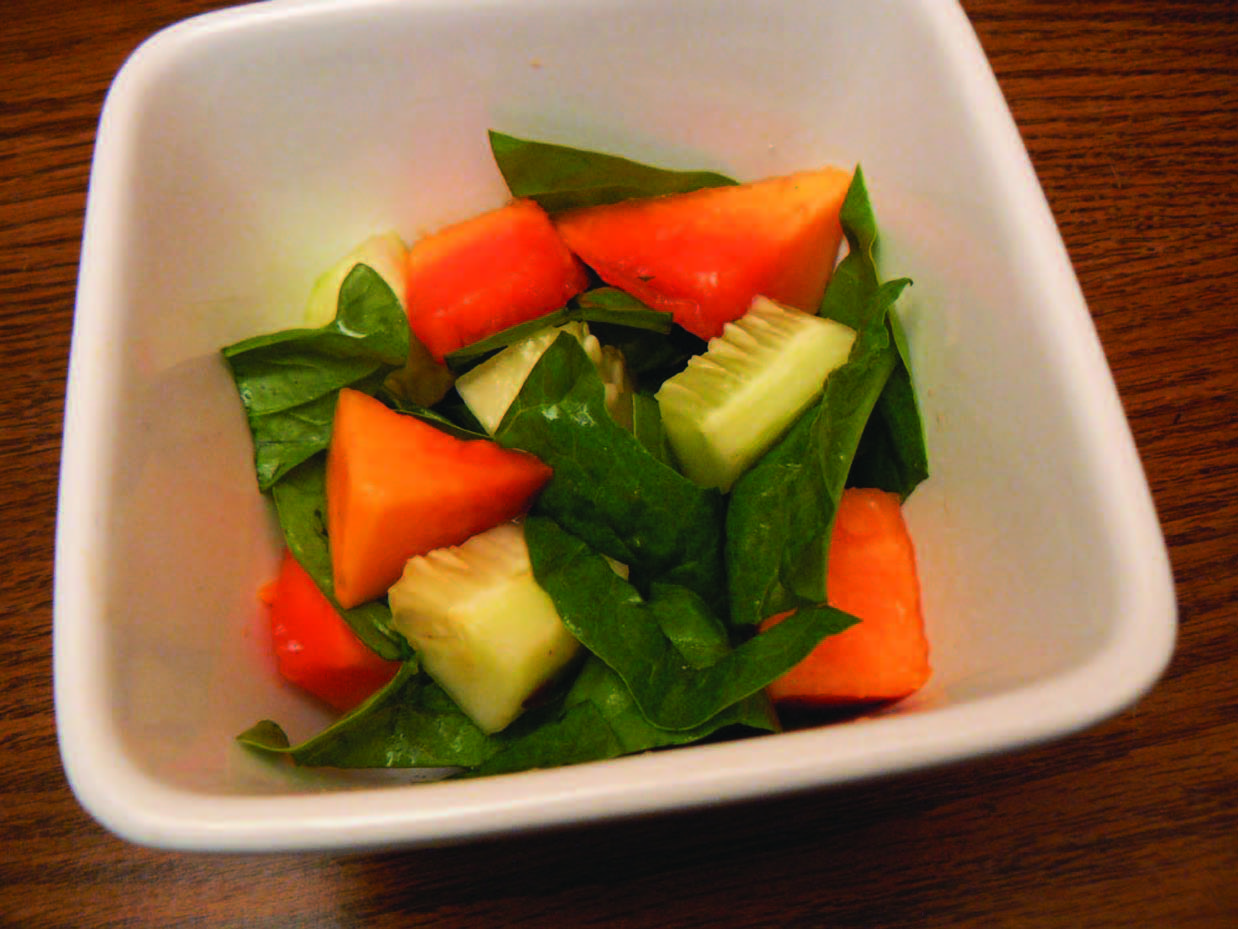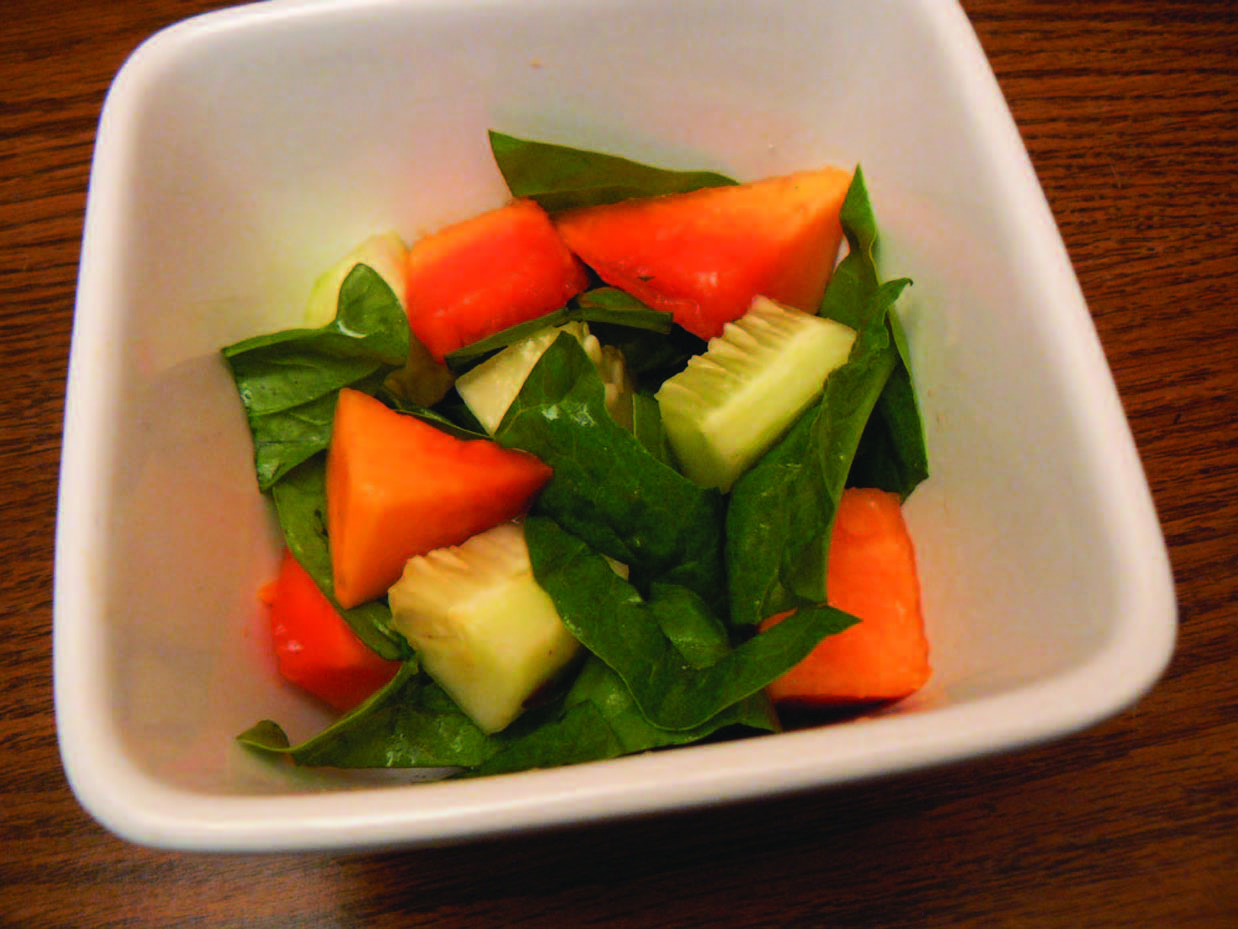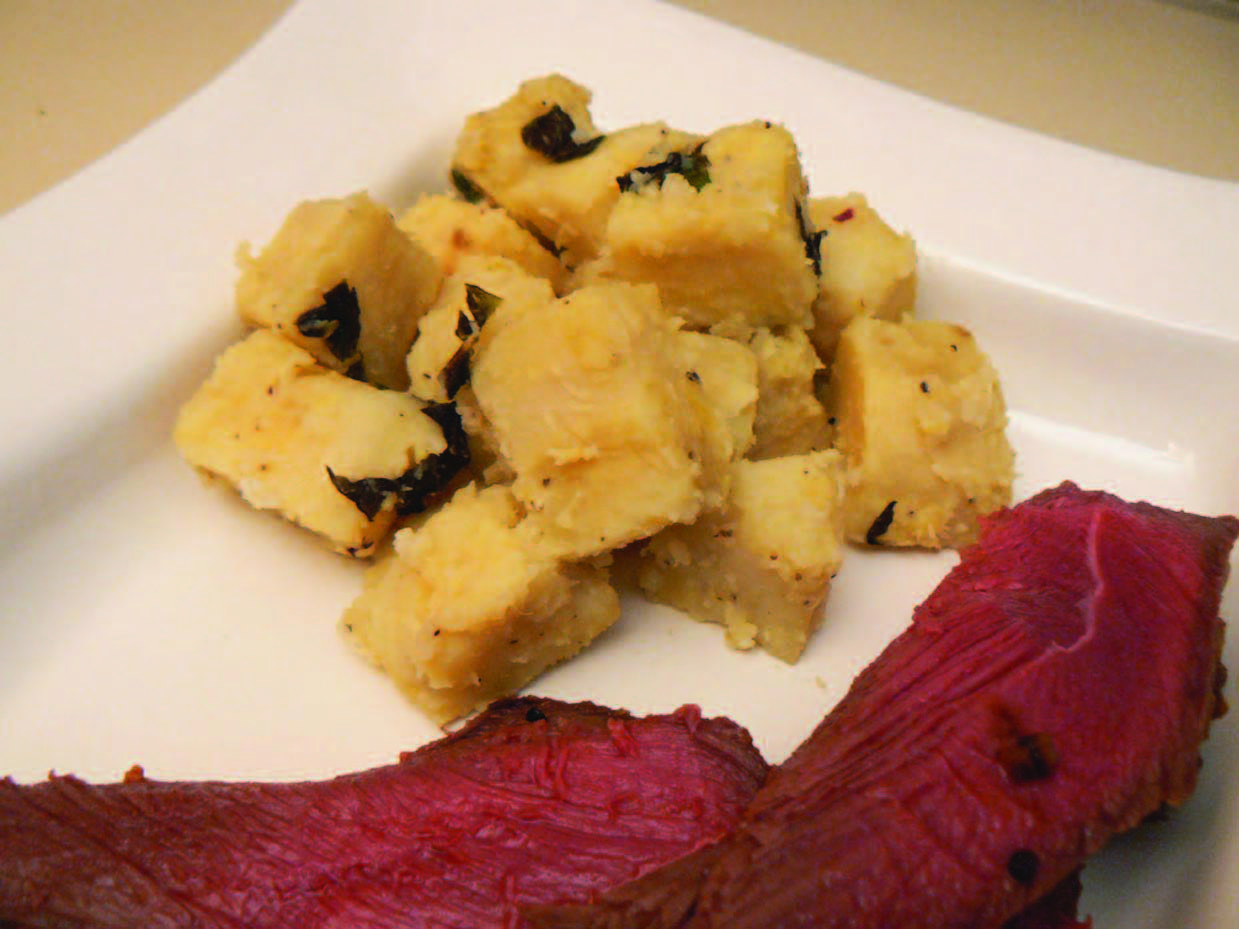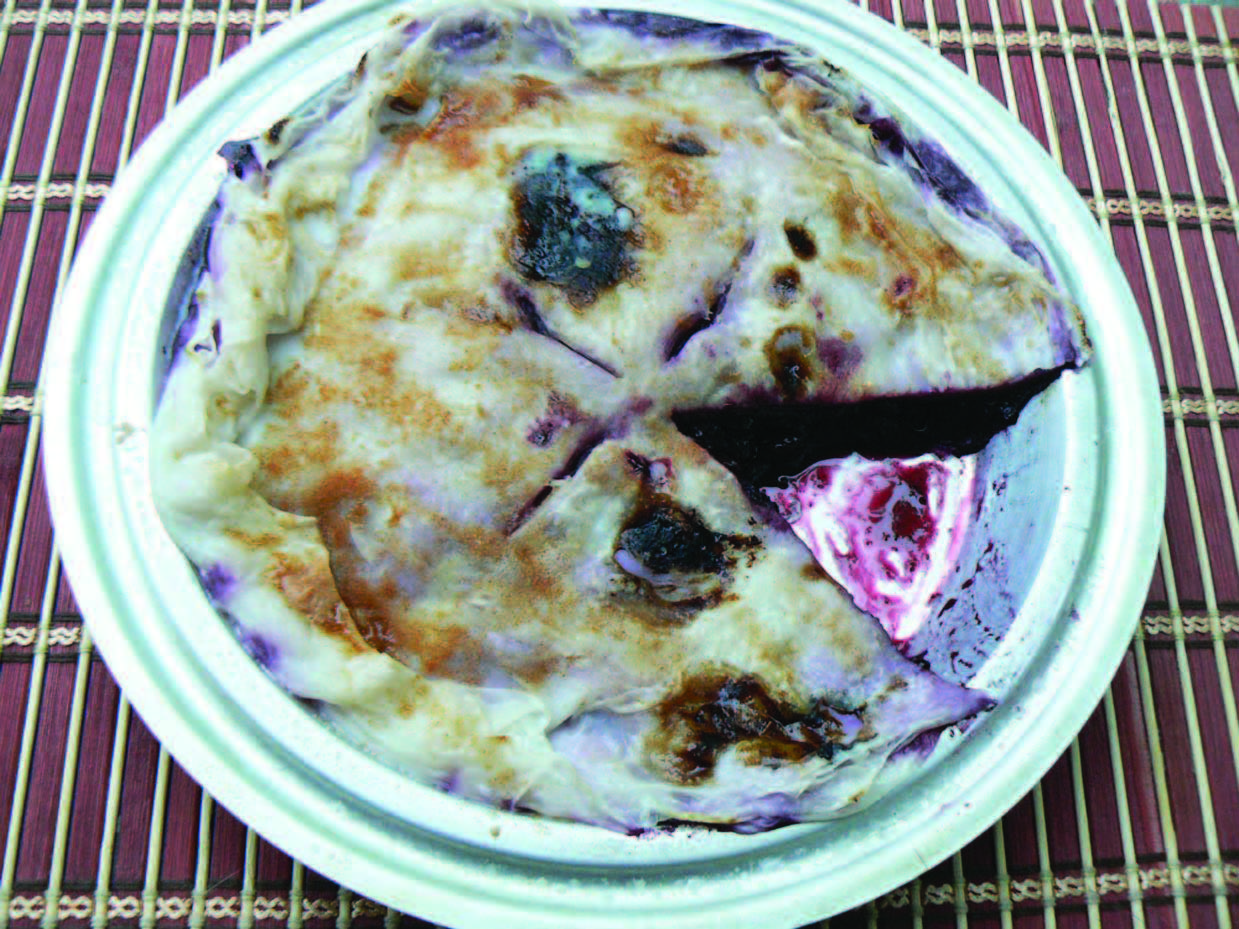Recipes: Issue 79

Colorful Fruit Salad
Time: 10+ minutes
This is a nice summer fruit salad to bring to barbecues or other gatherings. Feel free to substitute your favorite fruits or whatever you have on hand.
• 3 red plums
• 2 apples
• green and red grapes
• 2 nectarines
• 1 banana
• juice of 1 lemon
Core and slice all of the fruits into thin slices, then chop into small pieces. Mix in a large bowl. Then, squeeze the fresh lemon juice over your salad. Mix again. Chill and serve.
Double or quadruple the recipe depending on how many you'll be feeding.
Nutritional info: servings vary, but 1 cup will be around 20g carb (depending on your fruit choices and ratios)
Cantaloupe and Veggie Salad
Time: 5 minutes
• 1/2 cantaloupe, diced
• 3 cups chopped spinach
• 1 cucumber, peeled and sliced
• 2 tsp macadamia oil
Combine all of the above in a bowl and mix well.
Nutritional info: 3 servings at 12g carb, 3g fat

Middle Eastern Potato Salad
This is a spin on a traditional recipe. I used Japanese sweet potatoes instead of white potatoes here, but you can always make this recipe using white potatoes if you like. The Japanese sweet potatoes are reddish on the outside, but light yellow on the inside. They are low sugar and are the best for approximating white potatoes in taste. Give this one a try if you are tired of eating your sweet potatoes the same old way!
Time: 12 minutes
• 1 large Japanese Sweet Potato (or Russet potato)
• 1 clove garlic, crushed
• 2 tbsp chopped fresh mint
• 1 Tbsp olive oil
• juice of 1/2 lemon
• sea salt to taste
Peel and dice the potato into 3/4" cubes. Boil until crisp-soft, or pressure cook for 2 1/2 minutes at pressure. Drain the water. You want the sweet potatoes to be cooked, but not too soft. Allow the potatoes to cool some.
Add the remaining ingredients to a large bowl. Mix, then add the cooked sweet potatoes. Toss well to coat. Serve warm or chilled.
Nutritional info: 2 servings at 56g carb, 7g fat

Yam Noodles
This isn't a recipe per se, but rather a great new find for a mostly "Paleo" carbohydrate source. Look in Asian markets for packages of yam noodles. They may be labeled "vermicelli"; just check to see that the ingredients are only sweet potatoes (or yams). Be careful, because there are other kinds of vermicelli noodles that may have ingredients you may not like!
Besides being very inexpensive, these noodles are very versatile. Use them in any of your favorite pasta type recipes. You can also substitute these noodles in any of the recipes I've written using spaghetti squash or kelp noodles.
To prepare, simply soak the noodles in water for around 20-30 minutes or until soft. Bring to a boil; simmer for around 5 minutes. They are ready to use!
Nutritional info: 2 oz of noodles is around 47g carb.
Blueberry Pie
A grain-free pie! Not only that, no omega-6 fats.
Look for tapioca spring roll sheets in the Asian food section of nearly any grocery store; just be sure tapioca is the only ingredient besides salt and water. I also used dextrose instead of sugar to keep the fructose content of the pie low.
Time: 40 minutes
• 1/2 package of tapioca spring roll sheets
• coconut oil
Filling:
• 4 cups blueberries
• 1 Tbsp dextrose
• 1/2 tsp cinnamon
• 1/4 tsp cloves
• 1/4-1/2 tsp sea salt
• 1-1 1/2 Tbsp arrowroot powder
Topping:
• 1 tsp dextrose
• dash cinnamon
Remove about one quarter of the tapioca sheets from the package. One at a time, add these sheets to a pan of lukewarm water. Soak for 2-3 minutes, and then remove the sheets, drying with cheesecloth or something similar as you do.
Rub the bottom and sides of a pie tin with a bit of coconut oil. Now, lay the dried sheets on the bottom of your pie tin, staggering them so that both the bottom and the sides are covered. When done, it should look pretty much like a normal pie crust.
Add the blueberries and all of the filling ingredients except the arrowroot to a medium saucepan. Bring up to a boil, stirring. Reduce to a simmer; then, stir the arrowroot in slowly. Allow the blueberry mix to thicken until it has the consistency of gravy.
Pour the filling into the pie. Now, repeat the soaking and drying process with another quarter of the tapioca sheets. Lay these over top of the filling. Fold the edges for a nicer appearance, much like you would for any normal pie crust. Cut 4 slits through the top crust so the pie will vent while cooking. Finally, rub coconut oil over the top of the pie crust. Place the pie in the refrigerator to cool and thicken.
When it is close to time to serve the pie, pre-heat your oven to broil. Place the pie in the oven with the door open. Broil for 5-8 minutes until the top of the crust begins to brown and becomes crispy. While the pie is in the oven, mix 1 tsp of dextrose and a dash of cinnamon in a small bowl. When the pie is done, remove and dust the top with this mixture. Serve warm.
Nutritional info: 6 servings at 35g carb, 1.5g fat

Time: 10+ minutes
This is a nice summer fruit salad to bring to barbecues or other gatherings. Feel free to substitute your favorite fruits or whatever you have on hand.
• 3 red plums
• 2 apples
• green and red grapes
• 2 nectarines
• 1 banana
• juice of 1 lemon
Core and slice all of the fruits into thin slices, then chop into small pieces. Mix in a large bowl. Then, squeeze the fresh lemon juice over your salad. Mix again. Chill and serve.
Double or quadruple the recipe depending on how many you'll be feeding.
Nutritional info: servings vary, but 1 cup will be around 20g carb (depending on your fruit choices and ratios)
Cantaloupe and Veggie Salad
Time: 5 minutes
• 1/2 cantaloupe, diced
• 3 cups chopped spinach
• 1 cucumber, peeled and sliced
• 2 tsp macadamia oil
Combine all of the above in a bowl and mix well.
Nutritional info: 3 servings at 12g carb, 3g fat

Middle Eastern Potato Salad
This is a spin on a traditional recipe. I used Japanese sweet potatoes instead of white potatoes here, but you can always make this recipe using white potatoes if you like. The Japanese sweet potatoes are reddish on the outside, but light yellow on the inside. They are low sugar and are the best for approximating white potatoes in taste. Give this one a try if you are tired of eating your sweet potatoes the same old way!
Time: 12 minutes
• 1 large Japanese Sweet Potato (or Russet potato)
• 1 clove garlic, crushed
• 2 tbsp chopped fresh mint
• 1 Tbsp olive oil
• juice of 1/2 lemon
• sea salt to taste
Peel and dice the potato into 3/4" cubes. Boil until crisp-soft, or pressure cook for 2 1/2 minutes at pressure. Drain the water. You want the sweet potatoes to be cooked, but not too soft. Allow the potatoes to cool some.
Add the remaining ingredients to a large bowl. Mix, then add the cooked sweet potatoes. Toss well to coat. Serve warm or chilled.
Nutritional info: 2 servings at 56g carb, 7g fat

Yam Noodles
This isn't a recipe per se, but rather a great new find for a mostly "Paleo" carbohydrate source. Look in Asian markets for packages of yam noodles. They may be labeled "vermicelli"; just check to see that the ingredients are only sweet potatoes (or yams). Be careful, because there are other kinds of vermicelli noodles that may have ingredients you may not like!
Besides being very inexpensive, these noodles are very versatile. Use them in any of your favorite pasta type recipes. You can also substitute these noodles in any of the recipes I've written using spaghetti squash or kelp noodles.
To prepare, simply soak the noodles in water for around 20-30 minutes or until soft. Bring to a boil; simmer for around 5 minutes. They are ready to use!
Nutritional info: 2 oz of noodles is around 47g carb.
Blueberry Pie
A grain-free pie! Not only that, no omega-6 fats.
Look for tapioca spring roll sheets in the Asian food section of nearly any grocery store; just be sure tapioca is the only ingredient besides salt and water. I also used dextrose instead of sugar to keep the fructose content of the pie low.
Time: 40 minutes
• 1/2 package of tapioca spring roll sheets
• coconut oil
Filling:
• 4 cups blueberries
• 1 Tbsp dextrose
• 1/2 tsp cinnamon
• 1/4 tsp cloves
• 1/4-1/2 tsp sea salt
• 1-1 1/2 Tbsp arrowroot powder
Topping:
• 1 tsp dextrose
• dash cinnamon
Remove about one quarter of the tapioca sheets from the package. One at a time, add these sheets to a pan of lukewarm water. Soak for 2-3 minutes, and then remove the sheets, drying with cheesecloth or something similar as you do.
Rub the bottom and sides of a pie tin with a bit of coconut oil. Now, lay the dried sheets on the bottom of your pie tin, staggering them so that both the bottom and the sides are covered. When done, it should look pretty much like a normal pie crust.
Add the blueberries and all of the filling ingredients except the arrowroot to a medium saucepan. Bring up to a boil, stirring. Reduce to a simmer; then, stir the arrowroot in slowly. Allow the blueberry mix to thicken until it has the consistency of gravy.
Pour the filling into the pie. Now, repeat the soaking and drying process with another quarter of the tapioca sheets. Lay these over top of the filling. Fold the edges for a nicer appearance, much like you would for any normal pie crust. Cut 4 slits through the top crust so the pie will vent while cooking. Finally, rub coconut oil over the top of the pie crust. Place the pie in the refrigerator to cool and thicken.
When it is close to time to serve the pie, pre-heat your oven to broil. Place the pie in the oven with the door open. Broil for 5-8 minutes until the top of the crust begins to brown and becomes crispy. While the pie is in the oven, mix 1 tsp of dextrose and a dash of cinnamon in a small bowl. When the pie is done, remove and dust the top with this mixture. Serve warm.
Nutritional info: 6 servings at 35g carb, 1.5g fat

|
Scott Hagnas is owner of CrossFit Portland. He is certified as a CrossFit level 2 trainer and Circular Strength Training (clubbell) instructor. He has been riding BMX flatland for 26 years and counting and has filmed/produced/edited several series of BMX videos, plus several training videos. He formerly competed in bicycle trials, placing second in amateur in the World Championships in 1990. Cooking is one of his favorite pastimes. |
Search Articles
Article Categories
Sort by Author
Sort by Issue & Date
Article Categories
Sort by Author
Sort by Issue & Date

